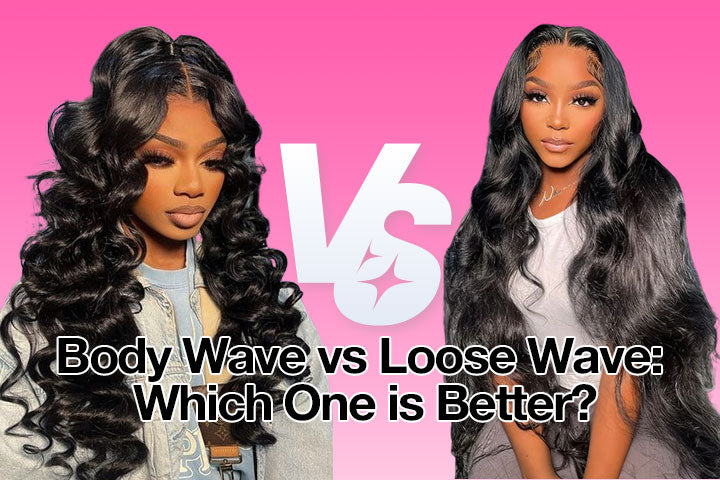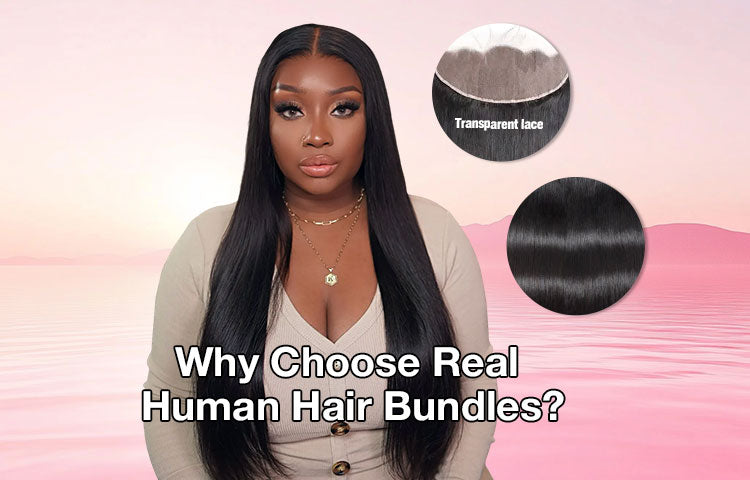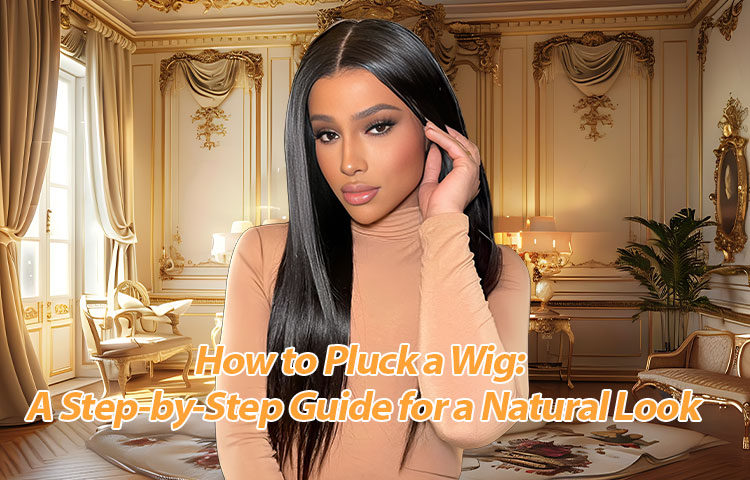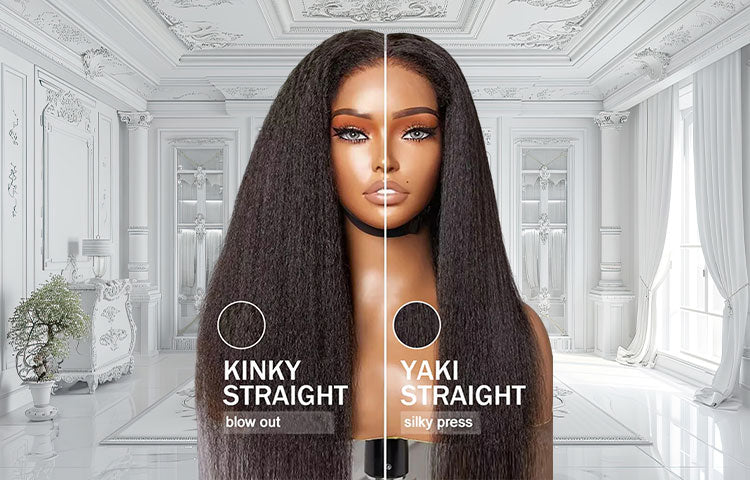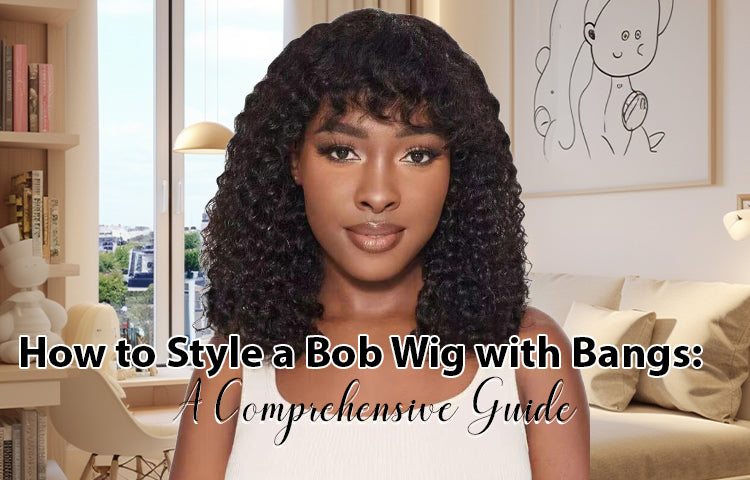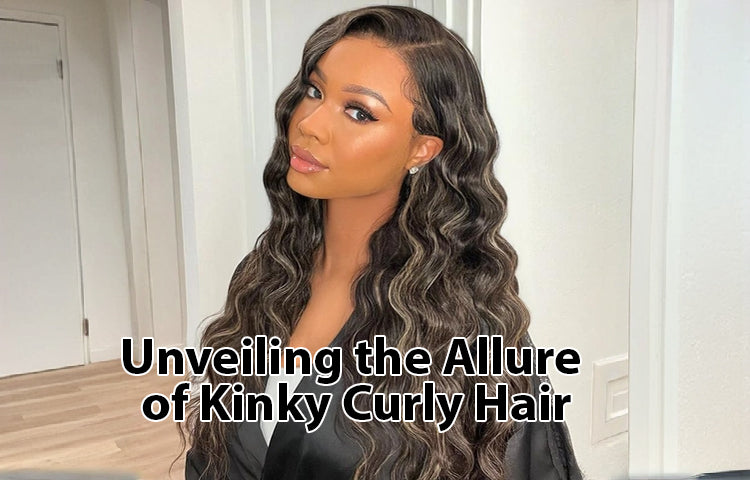What is the Difference: Yaki Straight VS Kinky Straight
When it comes to selecting the right hair texture for your weave or wig, the options can be overwhelming. Among the popular choices are Yaki Straight and Kinky Straight, both of which offer unique looks and styling possibilities. Understanding the differences between these two textures can help you make an informed decision and ensure you achieve the look you desire. In this blog post, we’ll delve into the distinctions between Yaki Straight and Kinky Straight hair, highlighting their characteristics, maintenance needs, and styling possibilities.
What is Yaki Straight Hair?
Yaki Straight hair is a texture that mimics the appearance of relaxed, straightened natural hair. The term "Yaki" originates from Japanese and refers to the process of texturizing hair to create a more natural, slightly coarse appearance. Yaki Straight hair is typically smooth but still retains a bit of the natural texture, offering a realistic look that blends seamlessly with relaxed African-American hair.
Characteristics of Yaki Straight Hair:
- Smooth Texture: Yaki Straight hair is smooth with a slight coarseness, which helps it blend well with relaxed natural hair.
- Natural Appearance: The texture mimics the look of hair that has been straightened with a relaxer, making it ideal for those who want a natural yet polished appearance.
- Less Volume: Compared to Kinky Straight hair, Yaki Straight generally has less volume and a sleeker look.

Maintenance and Styling:
- Maintenance: Yaki Straight hair is relatively low-maintenance. Regular washing, conditioning, and light heat styling are sufficient to keep it looking great.
- Styling: This texture is versatile and can be styled with various tools like flat irons or curling irons. It holds styles well but maintains a natural look due to its slight coarseness.
What is Kinky Straight Hair?
Kinky Straight hair, on the other hand, is designed to mimic the look of natural, unprocessed African-American hair that has a more pronounced texture. This texture is often used to create a fuller, more voluminous look that closely resembles hair in its natural state before any straightening or relaxing processes.
Characteristics of Kinky Straight Hair:
- Voluminous Texture: Kinky Straight hair is characterized by its full, voluminous texture that mirrors the natural curl pattern of unprocessed hair.
- Natural and Coarse: It has a more pronounced coarseness and a slight kink or wave, offering a more rugged and textured appearance compared to Yaki Straight.
- Greater Volume: This texture provides a lot of volume and can look very natural, especially if you’re aiming for a look that emulates natural hair with minimal processing.

Maintenance and Styling:
- Maintenance: Kinky Straight hair requires a bit more maintenance to keep its texture intact. Regular conditioning and detangling are essential to avoid tangling and maintain its natural look.
- Styling: This texture is versatile for various styles. It holds curls and waves well but may require more heat styling and care to maintain its volume and texture.
Comparing Yaki Straight and Kinky Straight
- Appearance: Yaki Straight offers a smoother, relaxed look, while Kinky Straight provides a fuller, more textured appearance that mimics natural hair with a bit of kink or wave.
- Volume: Kinky Straight generally offers more volume and a fuller look compared to the sleeker Yaki Straight.
- Texture: Yaki Straight is closer to relaxed hair with a smooth finish, while Kinky Straight reflects the natural, coarse texture of unprocessed hair.

In conclusion
Choosing between Yaki Straight and Kinky Straight hair depends largely on the look and feel you want to achieve. If you prefer a sleek, polished appearance that closely resembles relaxed hair, Yaki Straight might be your best option. Conversely, if you desire a more voluminous and natural look that emulates unprocessed hair, Kinky Straight could be the ideal choice.







